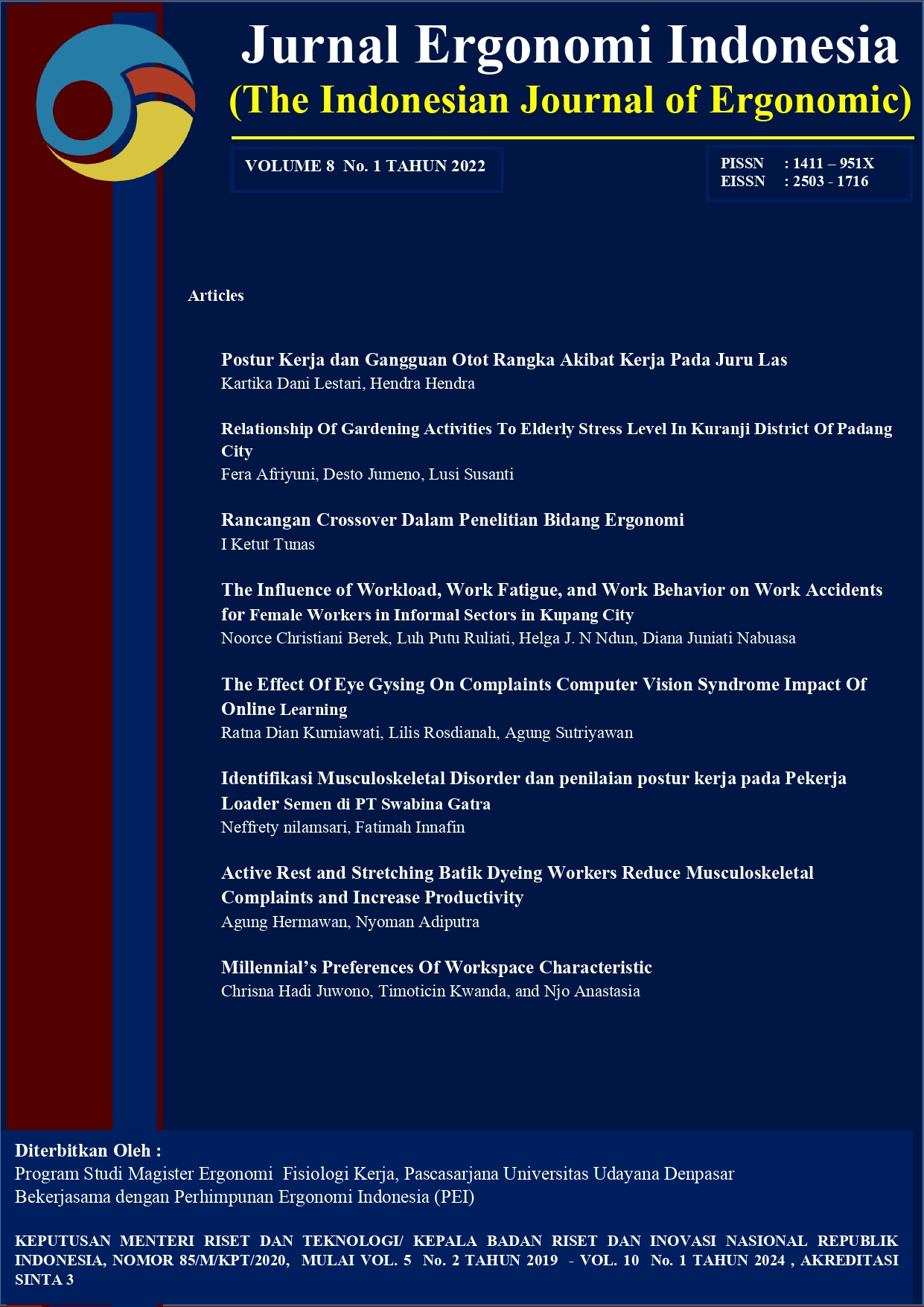Rancangan Crossover Dalam Penelitian Bidang Ergonomi
Abstract
Crossover is one of the research designs, which provides a sequence of interventions for each research subject. In giving the intervention, the subjects were divided into two or more groups in period I, then the intervention was exchanged in the next period. Each individual gets all interventions in the research process. The purpose of this paper is to provide an overview of the crossover design in ergonomics research, especially the design, number of samples, period effects, carryover effects and statistical tests. Crossover design has a special design, which is a special design of controlled double blind randomized trial design. The number of samples in this crossover design is less than the parallel design. The existence of a period effect and carryover effect, then the statistical test used adjusts to the effect of the period and the carryover effect.
Downloads
References
Cleophas, T. J., dan De Vogel, E. M. 1998. Crossover studies are a better format for comparing equivalent treatments than parallel-group studies. Pharm World Sci, 20(3): 113–117.
Feingold, M. dan Gillespie, B. W. 1996. Cross-over trials with censored data. Stat Med, 15(10): 953–67.
Fleiss, J. L. 1989. A critique of recent research on the two-treatment crossover design. Controlled clinical trials, 10(3): 237–43.
Kraemer, H. C., dan Thiemann, S. 1987. How many subjects? Statistical power analysis in research. Sage Publications, Inc.
Louis, T. A., Lavori, P. W., Bailar, J. C., dan Polansky, M. 1984. Crossover and self-controlled designs in clinical research. NEJM, 310: 24–31.
Maclure, M. 1991. The case-crossover design: a method for studying transient effects on the risk of acute events. Am J Epidemiol,133(2): 144–153.
Mills, E. J., Chan, A. W., Wu, P., Vail, A., Guyatt, G. H., dan Altman, D. G. 2009. Design, analysis, and presentation of crossover trials. Trials, 30(10): 27.
Nolan, S. J., Hambleton, I., dan Dwan, K. 2016. The Use and Reporting of the Cross-Over Study Design in Clinical Trials and Systematic Reviews: A Systematic Assessment. PLoS ONE, 11(7): e0159014.
Pocock, S. J. 2008. Clinical trials ‐ A Practical Approach. Chichester (UK): John Wiley & Sons.
Senn, S. J. 2002. Cross-over trials in clinical research (2nd edition). Chichester (UK): John Wiley & Sons.
Shen, D. dan Lu, Z. 2006. Estimate Carryover Effect in Clinical Trial Crossover Designs. Terdapat pada https://www.lexjansen.com/pharmasug/2006/Posters/PO16.pdf. Diakses pada tanggal 24 Maret 2022.
Stufken, J. 1996. Optimal crossover designs. Handbook of statistics, 13:63–90.
Wang, W., Cong, N., Chen, T., Zhang, H., dan Zhang, B. 2019. A note on misspecification in general linear models with correlated errors for the analysis of crossover clinical trials. PLoS ONE, 14 (3): e0213436.
Wellek, S. dan Blettner, M. 2012. On the proper use of the crossover design in clinical trials: part 18 of a series on evaluation of scientific publications. Dtsch Arztebl Int, 109(15): 276–81.

















